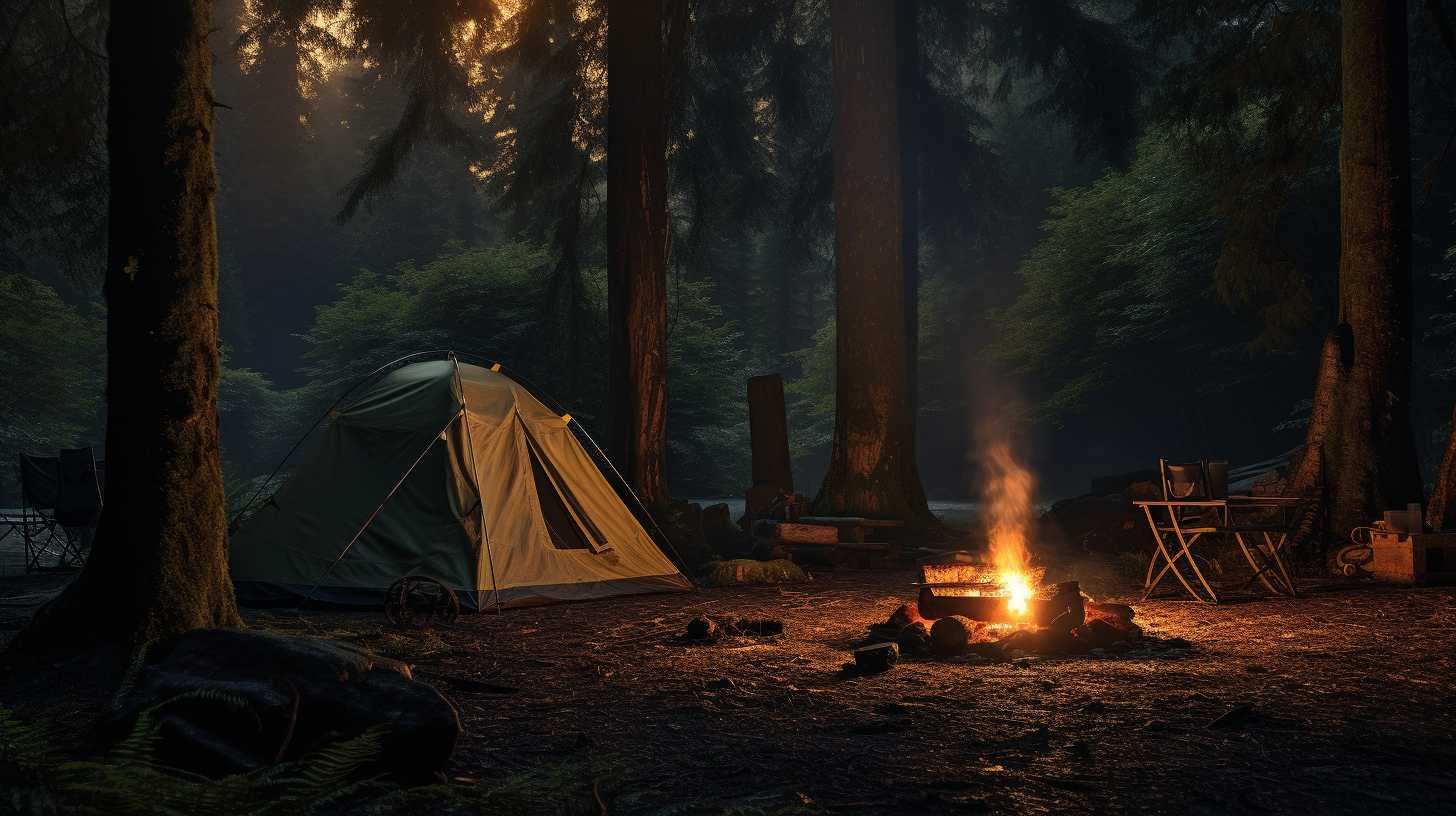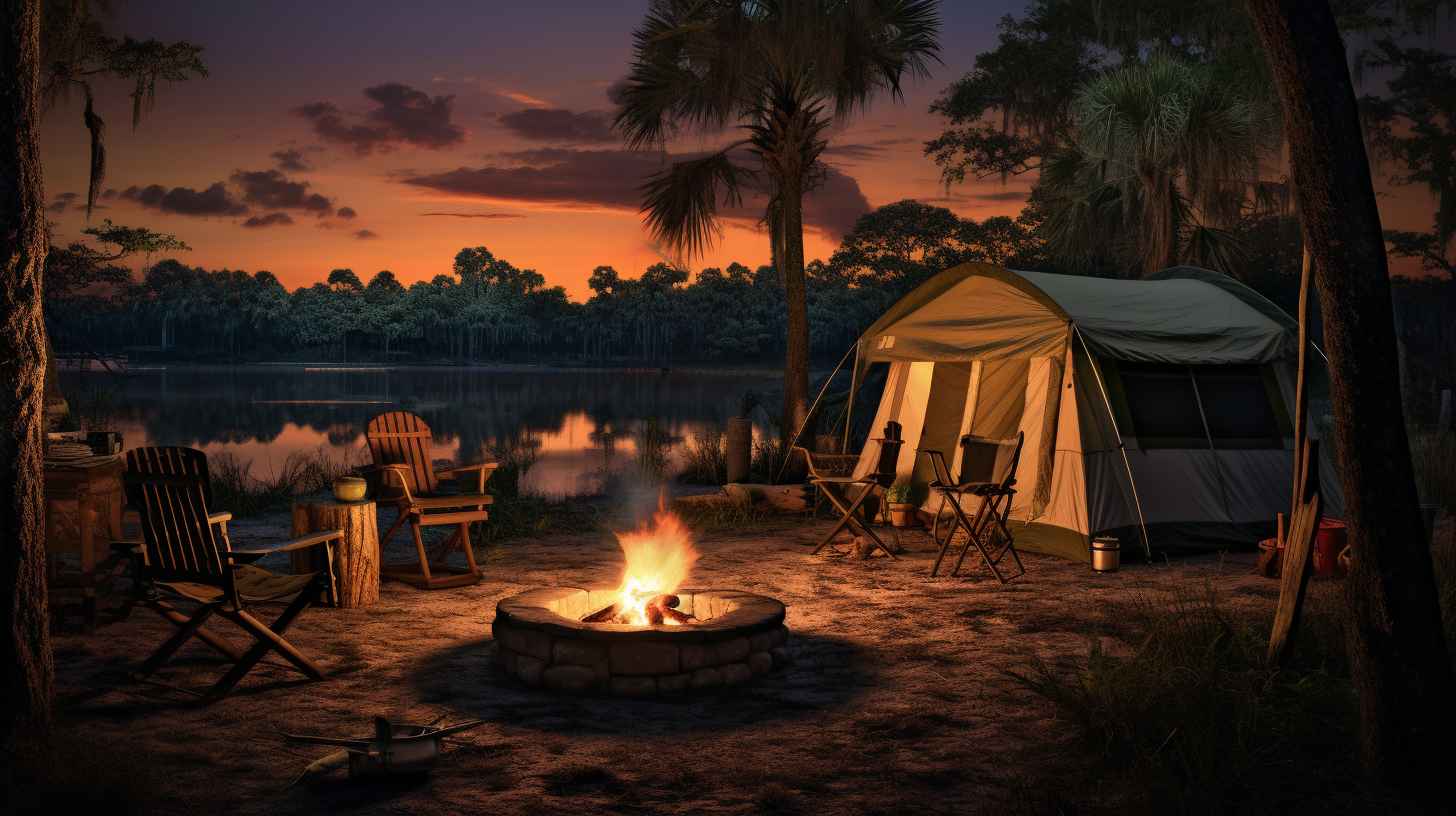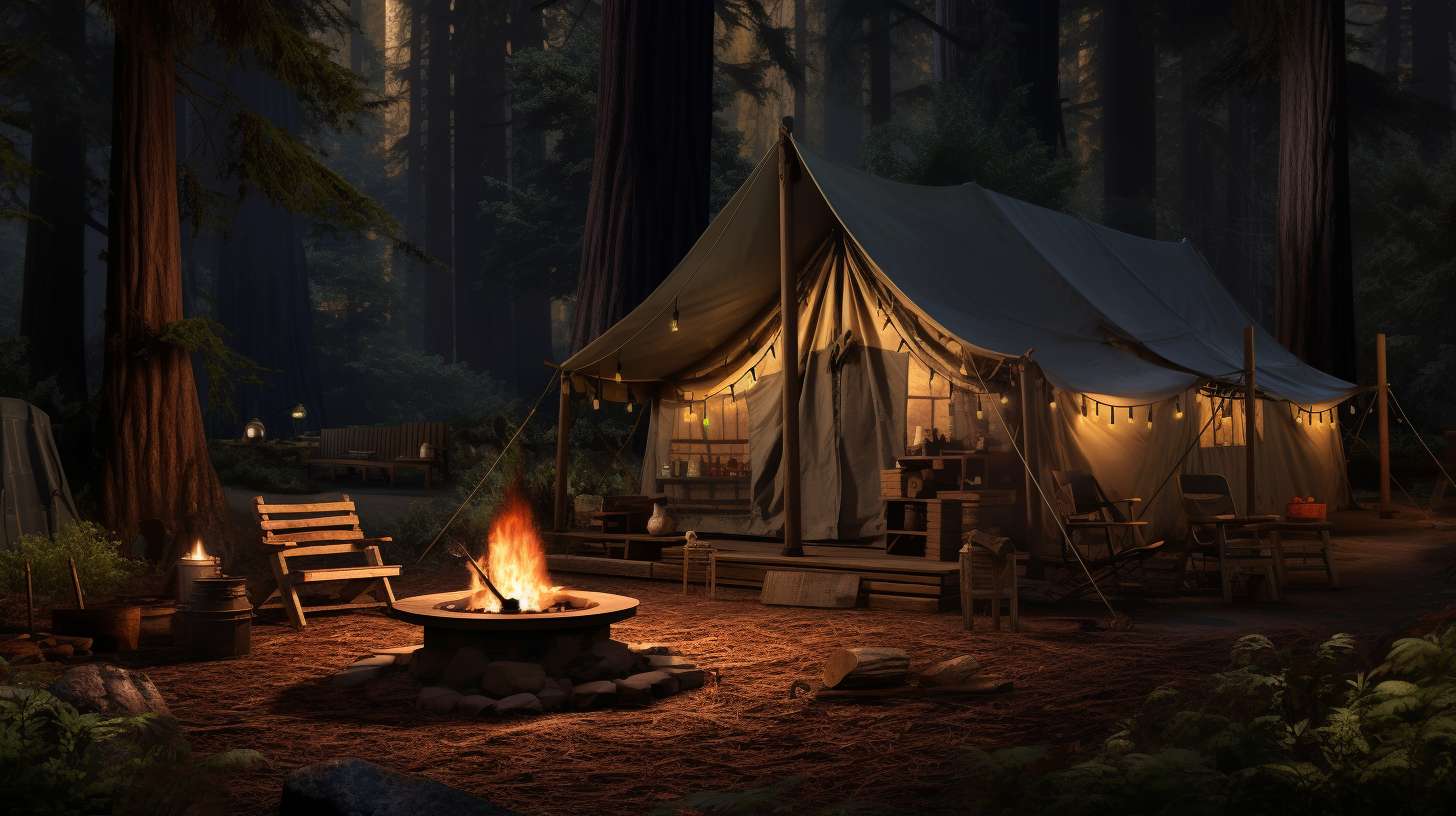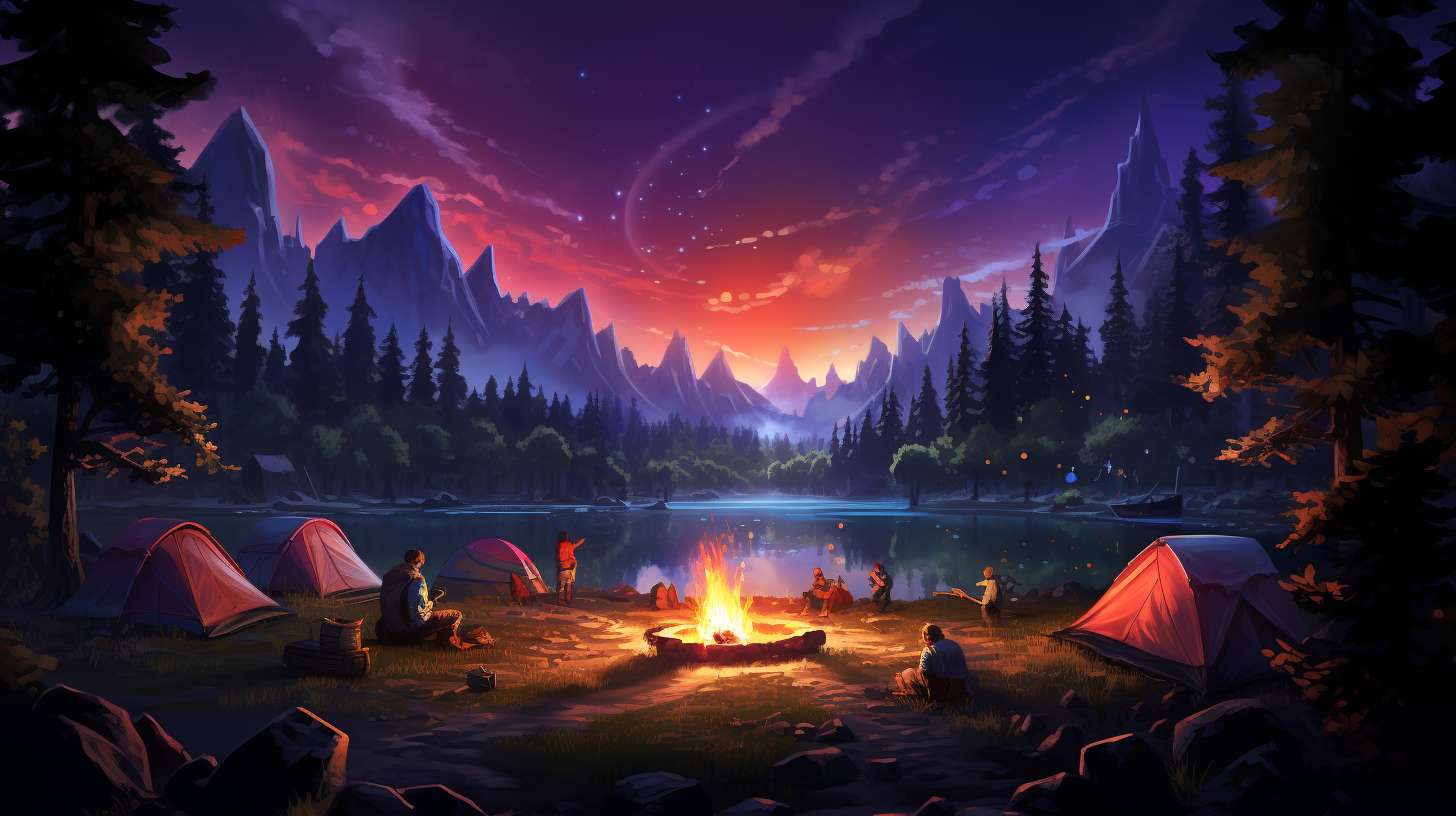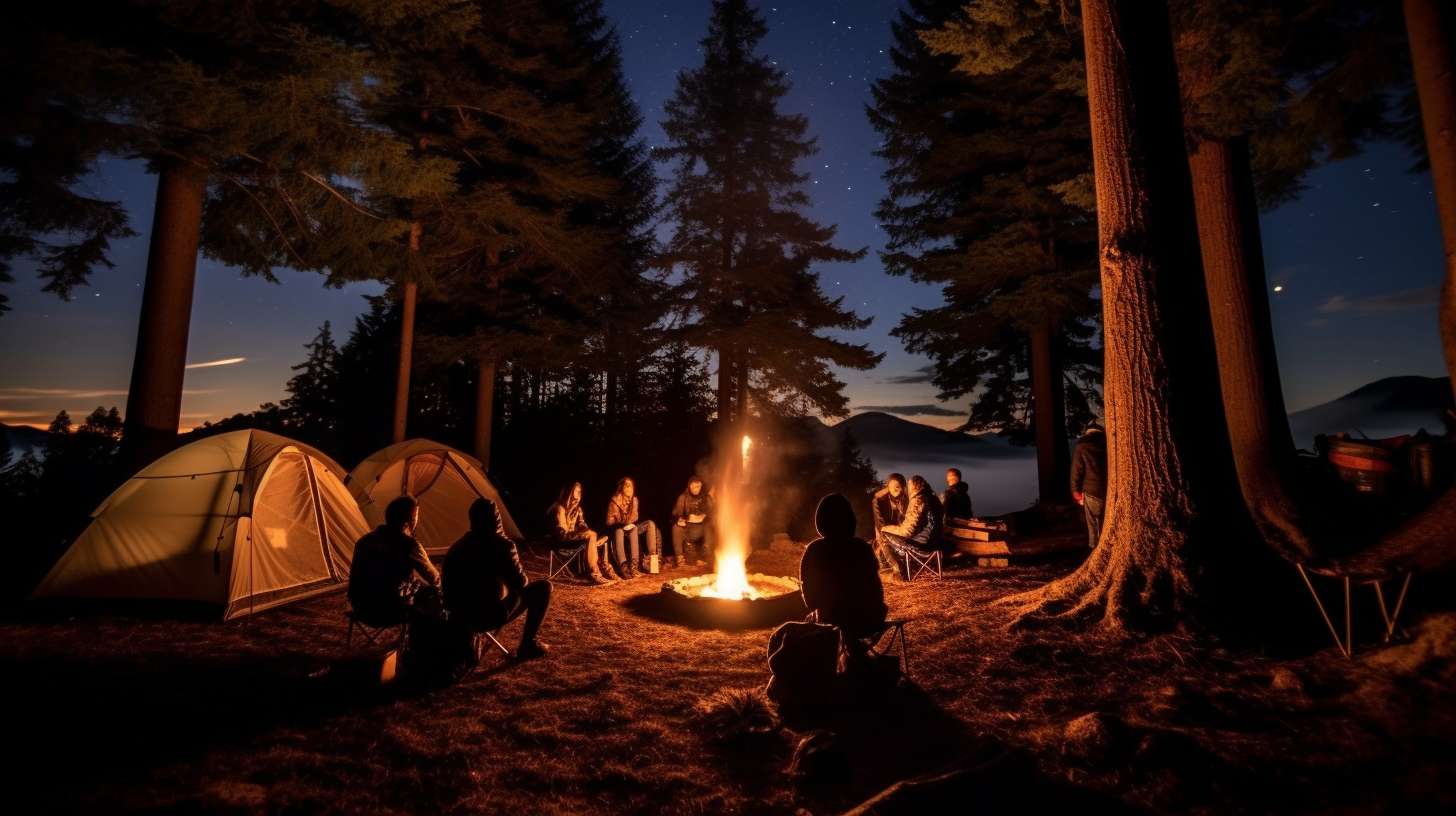
Camping and Animals
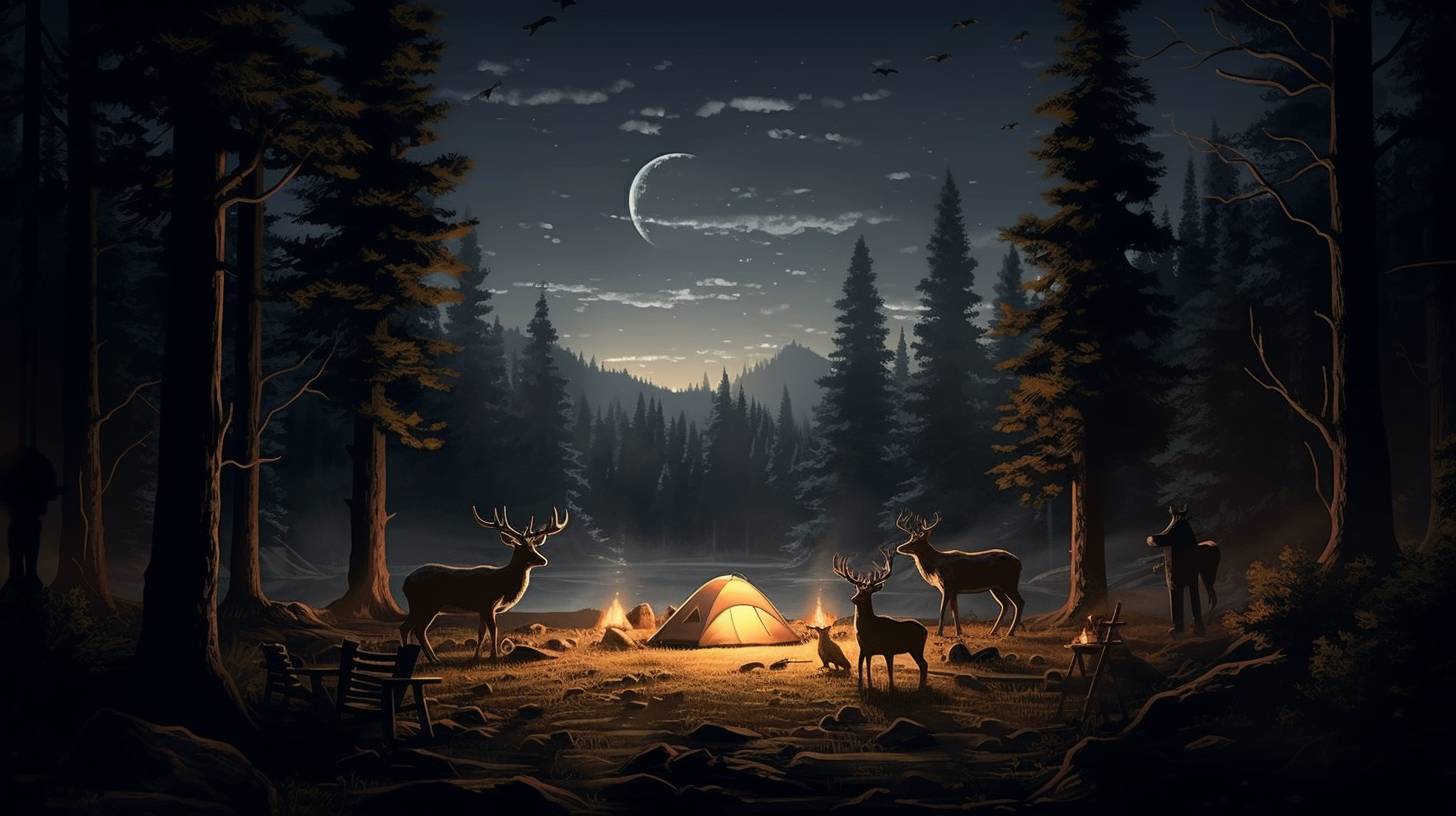
Imagine yourself venturing into the wilderness, surrounded by towering trees and the soft whispers of nature. As you set up camp, you can’t help but feel a sense of excitement and anticipation. After all, camping and animals are like two peas in a pod, offering you the chance to witness the wonders of wildlife up close.
From curious squirrels darting through the underbrush to majestic bears prowling in the distance, the great outdoors is teeming with creatures big and small. However, it’s crucial to remember that these animals are wild and should be respected from a safe distance.
By honoring their space, you can ensure a harmonious coexistence between humans and the magnificent animals that call the wilderness their home.
Common Wildlife Encounters

Prepare yourself for encounters with various wildlife while camping.
One common encounter you may have is with rabbits and hares. These small mammals can be found almost anywhere in the United States. They’re often seen munching on vegetables in gardens or nibbling on tree bark. However, they tend to avoid interacting with humans, preferring to hide in bushes or underground tunnels.
Another common encounter is with raccoons, chipmunks, and squirrels. These animals are abundant in nature and can be spotted in various areas. Squirrels are often found in trees, snacking on nuts, while chipmunks live in underground tunnels. Raccoons may raid campsites in search of food, so it’s important to keep a safe distance to avoid any unwanted interactions.
Safety Tips for Camping With Animals
Keep your pets secure and minimize interactions with wildlife by following these safety tips while camping.
| Safety Tips for Camping With Animals |
|---|
| 1. Always keep your pets on a leash and use a spiral stake to ensure they are secure while still allowing them some freedom to roam. |
| 2. Store food and cook sites at least 200 feet away from the sleeping area and use critter-proof containers for perishables to minimize food smells and deter animals. |
| 3. Be cautious when moving logs or brush to avoid disturbing snakes. Consider wearing sturdy boots and gloves in areas with a high snake population. |
| 4. Bears are attracted to food odors and toiletry items. Secure these items and use bear-proof coolers to keep food and beverages cold while keeping bears out. |
Endemic Animals in Different Landscapes

When camping in different landscapes, you may frequently encounter endemic animals that are unique to each specific environment.
In the United States, rabbits and hares can be found almost anywhere, munching on vegetables in gardens or gnawing on tree bark. These small mammals like raccoons, chipmunks, and squirrels are abundant in various areas, with squirrels climbing trees to snack on nuts, chipmunks living in underground tunnels, and raccoons potentially raiding campsites for food.
The Canidae family includes foxes, coyotes, and wolves, resembling domesticated dogs but considered dangerous if approached too closely.
Birds of prey, such as owls, hawks, falcons, eagles, and vultures, hunt throughout the day or night, with eagles, hawks, and falcons hunting during daylight hours and owls known for their hooting while hunting at night.
Coastal wildlife boasts marine creatures like crabs, dolphins, pelicans, seagulls, seals, sharks, starfish, and whales, while desert wildlife includes unique animals like cougars, fire ants, killer bees, rattlesnakes, scorpions, and tarantulas.
Lastly, grassland wildlife supports species such as armadillos, bison, gophers, groundhogs, prairie dogs, and wild turkeys.
Protecting Yourself From Predators
Are you aware of the steps you can take to safeguard yourself from predators while camping? It is important to take precautions to protect yourself and your fellow campers from potential dangers. Here are some key measures you can implement:
| Precautions | Actions |
|---|---|
| Be cautious when moving logs or brush | Wear sturdy boots and gloves in areas with a high snake population |
| Store cooking clothes in an airtight bag or container | Prevent attracting wildlife with food odors by regularly cleaning pots, pans, and picking up trash |
| Keep food out of sight | Use critter-proof containers instead of hanging food and store food in a vehicle if extra caution is needed |
| Check tent for any rips or malfunctioning zippers | Set up sleeping area at least 200 feet away from cooking and food storage areas |
| Use Nite Guard Solar Lights | Place the lights around the campsite perimeter, approximately 100-200 feet apart, and install them at eye level to the predator |
Enjoying Nature Responsibly

To truly appreciate and protect the natural world around you, it’s important that you consistently and consciously practice responsible enjoyment of nature while camping. This means being mindful of the wildlife you encounter and respecting their habitats.
When observing small mammals like rabbits, hares, raccoons, chipmunks, and squirrels, maintain a safe distance and avoid disturbing their natural habitat.
If you come across Canidae family members like foxes, coyotes, or wolves, exercise caution and keep a safe distance to ensure the safety of both humans and animals.
Similarly, respect the hunting patterns of birds of prey such as owls, hawks, falcons, eagles, and vultures, and avoid disrupting their natural behavior.
When encountering reptiles like snakes, turtles, tortoises, and alligators, appreciate their beauty from afar and refrain from approaching them to ensure the safety of both humans and animals.
Lastly, when exploring diverse habitats like coastal, desert, and grassland areas, be cautious and avoid close contact to minimize potential harm to both humans and wildlife.
Conclusion
So next time you’re out camping, remember to embrace the wonders of nature and the incredible animals that call it home.
But always keep in mind, as the saying goes, ‘Keep your eyes open and your distance respectful.’ By doing so, you’ll ensure a harmonious coexistence with the wildlife.
Creating unforgettable camping memories while preserving the beauty and diversity of our natural world.
Happy camping!
More information about Camping and Animals
Can You Go Camping With a Gun
Discover the ultimate camping companion: your trusty sidearm. Unveiling the surprising reasons why packing a gun can enhance your outdoor adventures like never before!
Can You Have a Gun While Camping in Florida
Uncover the truth about camping in Florida with a gun. Stay safe and informed on gun laws in the Sunshine State, click now!
Can You Take a Gun Camping in California
Discover the truth about taking a gun camping in California. Stay informed and ensure your safety in the great outdoors. Click now!
Does Light Attract Animals Camping
Discover the surprising truth: Does light attract animals while camping? Uncover the secrets of the wilderness and see how light affects the animal kingdom. Click now!
Affiliate information declaration: We may earn revenue from the products referred on this page and participate in affiliate programs.
